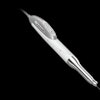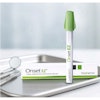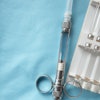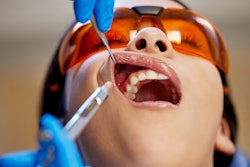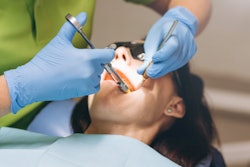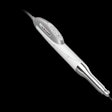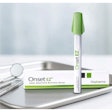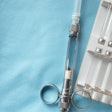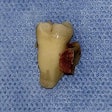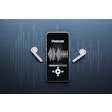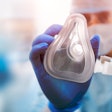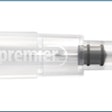Articaine given only by buccal infiltration may not be as effective as lidocaine with standard infiltration and palatal injection for molar extractions. The study was recently published in the Journal of the American Dental Association.
Furthermore, patients may be more likely to report pain when they receive articaine, the authors wrote.
“Buccal infiltration with articaine only may not be sufficient to ensure adequate anesthesia for extraction of maxillary primary molars,” wrote the authors, led by Dr. Danielle Cristina Alves Rigo, PhD, MSc, of the Federal University of Santa Catarina Department of Dentistry in Brazil (JADA, September 11, 2025).
This randomized, single-blind trial included 76 children ages 6 to 9 who underwent maxillary primary molar extractions. Participants were split into two groups: one group received single buccal infiltration with 4% articaine; the other received conventional buccal plus palatal infiltration with 2% lidocaine. Both groups followed the same topical anesthesia protocol, they wrote.
The study involved two clinic visits for screening and treatment and a follow-up teleconsultation to complete a final questionnaire. The main outcome was self-reported pain during extraction, measured on a 10-cm visual analog scale (VAS) from 0 (no pain) to 10 (worst pain). Also, researchers evaluated noninferiority, heart rate, and factors linked to pain.
The lidocaine group reported a mean VAS pain score of 1.68 cm (95% confidence interval [CI], 0.93 to 2.67), while the articaine group reported 4.18 cm (95% CI, 3.08 to 5.31), a significant difference (p < 0.001), with a mean difference of 2.5 cm (95% CI, 1.09 to 3.90). Noninferiority could not be confirmed (p = 0.919) because the upper 95% CI exceeded the 1.5-cm margin, they wrote.
Per-protocol analysis showed similar results, with a mean difference of 1.93 cm (95% CI, -0.01 to 3.87; p = 0.672). There was a negative binomial regression found with articaine linked to higher pain (rate ratio, 2.15; 95% CI, 1.22 to 3.77; p = .0008) and showed that each one-beat rise in heart rate increased pain prevalence by 1% (rate ratio, 1.01; 95% CI, 1 to 1.03; p = .0023).
However, the study had limitations. Self-reporting tools like the VAS may not reliably measure pain thresholds or intensity, the authors added.
“Our findings do not support the use of buccal infiltration with 4% articaine only as a noninferior technique to conventional lidocaine infiltration with palatal injection in pediatric maxillary molar extractions,” they concluded.

